Recommended Security & Anti-virus Software
Instructions to uninstall Lawrence provided Kaspersky software:
Apple Mac Users
- Download the Kaspersky Uninstaller.
This will download as a zip file into your Downloads folder (or wherever you have your browser set to store downloaded files). Open the zip file and run the Kaspersky Endpoint Security Uninstaller app. - Download the Kaspersky Network Agent Uninstaller.
This will download as a zip file. Open the zip file and run the Kaspersky Network Agent Uninstaller app.
Window Users
- Go to Start menu - Control Panel - Program and Features
- Select Kaspersky Agent from list and click Uninstall from top of screen.
- Follow prompts to uninstall software.
Install Sophos for Apple Mac users
Sophos Installation Instructions (Mac Users)
- Go to http://www.sophos.com/en-us/products/free-tools/sophos-antivirus-for-mac-home-edition.aspx
- Click Get Started
- Fill in the required information
- The file will download as a .zip file. You may have to click on the link if it doesn't start downloading on its own.
- When done downloading, double-click the .zip file to expand it.
- Double-click Sophos Anti-Virus Home Edition to run the installer.
- Click Open/Continue/Agree prompts until the program installs.
- Click the shield Sophos icon by your clock and choose Update Now
- The update will be about 145MB. Once it’s done you will be able to register.
Install Windows Security Software
Microsoft Security Essentials/Windows Defender Installation Instructions (Windows 7 and 8/8.1 users)
Windows 7 Users
- Download Microsoft Security Essentials from http://windows.microsoft.com/en-us/windows/security-essentials-download
- When the Microsoft Security Essentials download starts, click the Run button from the pop-up dialog box
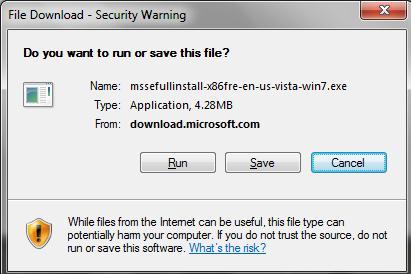
- Once the download complete follow the setup prompts.
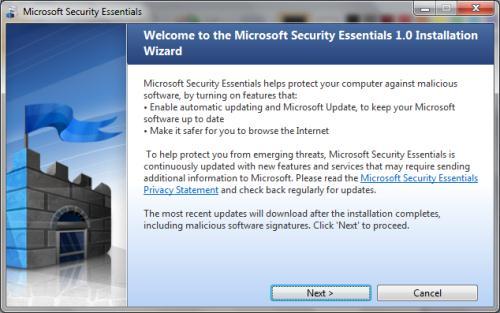
- Click Validate at the Validate prompt
- Click Install at the Install Microsoft Security Essentials prompt
- Click Finish
- Update Security Essentials once the Installation is complete (this must be completed with an active internet connection)
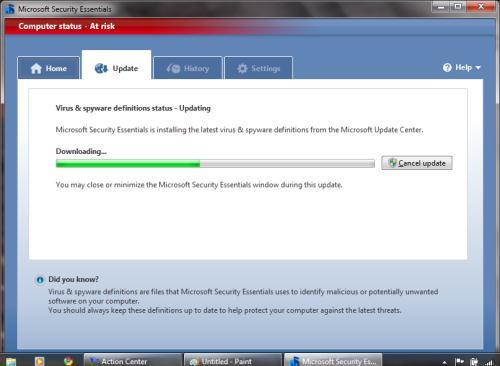
- Once the main Security Essentials Window has a (Green) "Computer Status - Protected" bar, your PC is fully updated with the latest anti-virus/anti-malware definitions available
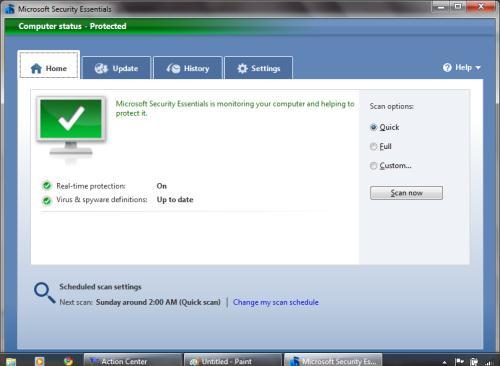
- Click Close (X) when finished.
Window 8/8.1 Users
Note: The default setting in 8 /8.1 is to have Windows Defender on. To double check this setting follow the instructions below.
- Go to the Action Center. (Click/tap on the Action Center icon in the taskbar notification area or go to Control Panel and click/tap Action Center)
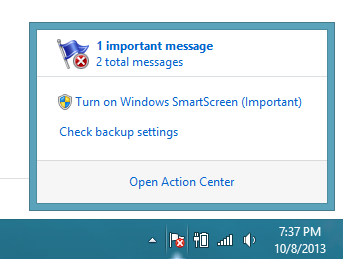
- Click/tap on the Turn on now (or Update Now) buttons for both Virus protection and Spyware and unwanted software protection messages, close Action Center, and go to step 3 below. (see screenshot below)
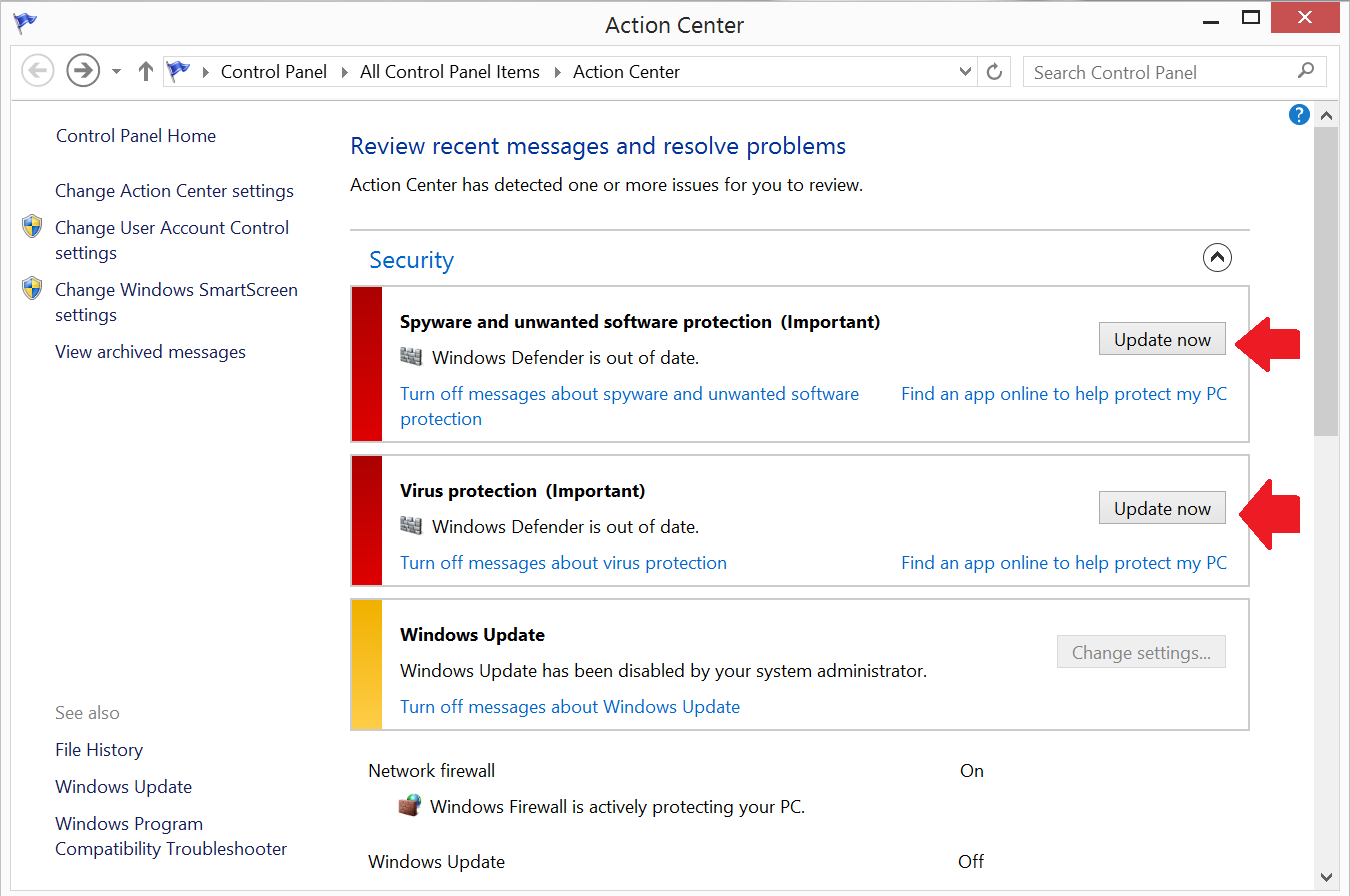 Note: If you do not have the Virus protection or Spyware and unwanted software protection messages in Action Center then:
Note: If you do not have the Virus protection or Spyware and unwanted software protection messages in Action Center then:
Expand Security (drop-down arrow) – Select both "Turn on messages about virus protection" and "turn on messages about spyware and unwanted software protection"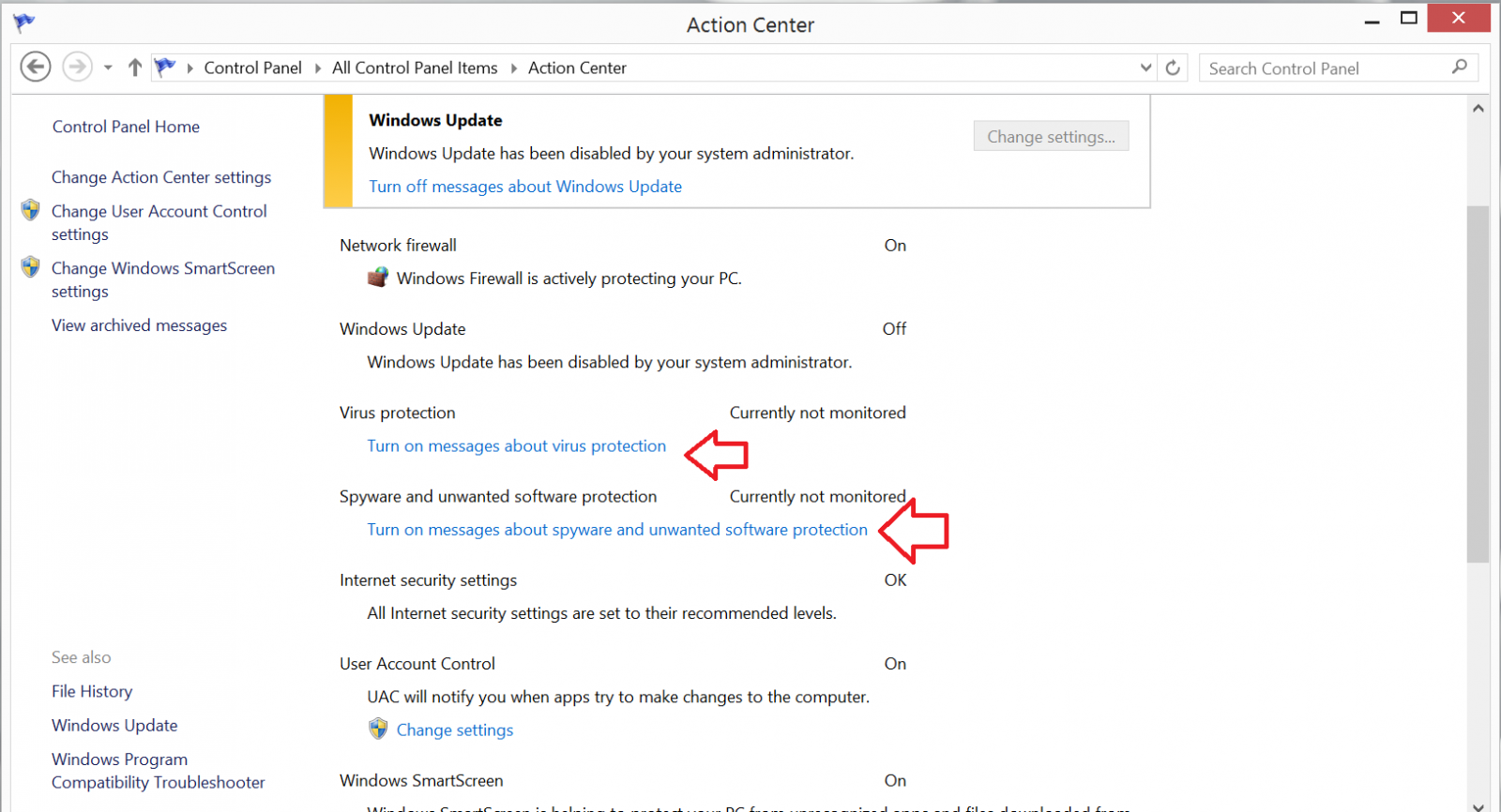
- Windows Defender will now open with it's security status as green to let you know that Windows Defender is actively protecting your computer. (see screenshot below)
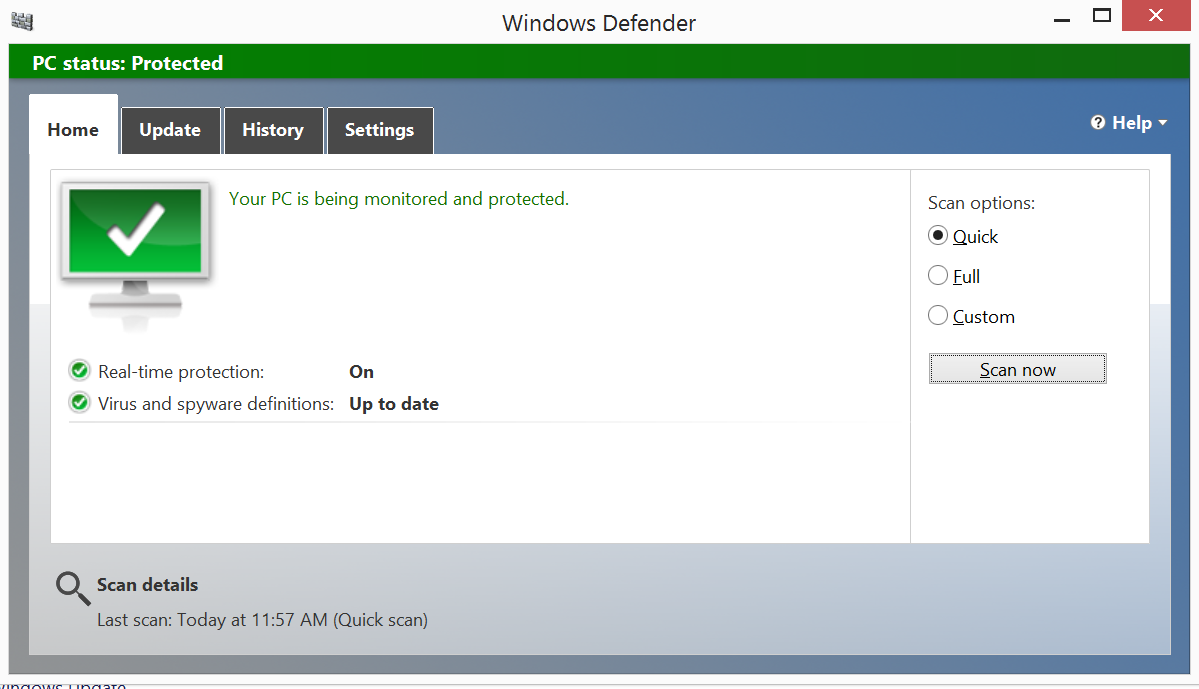
If you have any questions or concerns please contact the Helpdesk at helpdesk@lawrence.edu